If the house at Ballyfin is beyond superb (see Robert’s post this week), the grounds are equally so. Originally based on the design philosophies of Capability Brown, the emphasis is on natural and sweeping vistas, pleasure gardens, mixtures of open lawn and woodlands, tea-houses and follies artfully dotted around, an expansive lake with an island and with lawns leading down to the edge, and of course a long winding driveway that eventually reveals the best view of the house.
Somehow all these landscape features have survived intact at Ballyfin, although some of them needed to be rediscovered or uncovered. What has been added is a masterpiece of both enhancement and restraint, and the genius behind that is Jim Reynolds, the Managing Director of the enterprise that is Ballyfin Demesne. Jim and I share a past in Boyne Valley Archaeology, although we were in different camps (that’s another story) and I visited his famous garden, The Butterstream in Meath, with my mother in the early 90s. That was the last time I saw him until this week. Genial and self-effacing, he gives credit to his marvellous team, while they, to a person, talk about his eye, his vision, his expansive knowledge and his drive.
We spent two days walking, riding (in a horse and carriage) and driving (in a golf cart) around the estate, and we still haven’t seen all of its 640 acres. Entrancing is the word that keeps coming to me. It’s spring still (late this year) and the woods are awash in bluebells, mixed with Ramsons, Herb Robert and Greater Celandine.
The extensive trail system takes you around the lake and into the old-growth woods, where chestnuts and oak trees shelter vast swathes of colourful undergrowth.
The path meanders past the Grotto (every house should have one) which is not your typical Irish Lourdes shrine, but a rustic construction created to convey a sense of ancient ‘druidic’ mystery. Impressing and amusing your guests was important and grottos, temples and such like were a vital element of 18th century pleasure gardens.
When it comes to follies, the jewel in the crown at Ballyfin is the Round Tower. It looks old because it was built that way, as a ruin. They say that from the top you can see 16 counties. It’s a pleasant thing, as a couple of our fellow-guests did, to take a book up to the little room at the top and while away an hour or two before wandering back down to the house for coffee and a scone, mid-morning.
Jim and his team’s commitment to wild flowers and to pollinators is everywhere in evidence. The meadows are only cut once a year and as a result they are alive with the hum of bees and the flash of butterflies. Even the formal and kitchen gardens have areas set aside to attract pollinators.
As seems inevitable in Ireland nowadays, we also saw Japanese Knotweed on the demesne. Robert Pywell, the head gardener, told us that the rock garden was originally hidden under an acre of Knotweed. Only constant spraying/injection can address a Knotweed problem, and the program is ongoing for this invasive and persistent species.
He told us about another pest too – Ireland has a mink problem. Originally imported from North America for the purpose of fur farming, several hundred mink were “liberated” by animal rights activists in a nearby county years ago. Others have escaped, or been released by fur farmers over the years. They have no predators in Ireland and they are ferocious killers of ducks, swans, fish, rabbits and small mammals. They have decimated the waterfowl population at Ballyfin. Trapping them is difficult, but it has to be done. Lady Coote would approve – she loved her peacocks and built an aviary for them (above) that was, as our driver said, better than some of the houses round about.
Back to that rock garden (above) – once it was salvaged it turned out to be a glorious addition to the demesne. Built around an old millstream and pond, it hosts some delightful plants. A new one for me was Saxifraga Cymbalaria (sometimes called Celandine Saxifrage), which is not native and only known in a few places in Ireland. It obviously loves the rockery as it is flourishing and providing an attractive yellow ground cover.
Beautiful as this designed landscape was, once fully restored, something was missing and Jim Reynold’s unerring eye for detail knew exactly what was needed. What he did was to build a cascade down the back lawn, from an ornamental temple at the top to a Neptune pond at the bottom. It is the perfect finishing touch and has quickly become an iconic aspect of Ballyfin’s landscaping.
We loved our break at Ballyfin. Special treats such as this don’t come around often in the normal course of life, so we are grateful that we can enjoy the odd sortie such as this now and then. It was such a privilege to be able to appreciate the incredible work that has gone into restoring this house to its former glory and the wonderful staff that looks after it (and looked after us!) so proudly.
Thank you, Ballyfin!

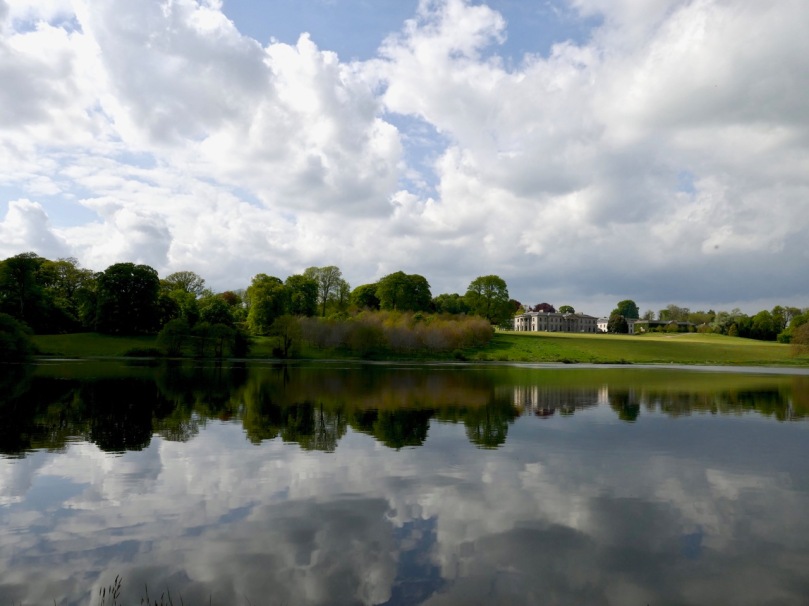



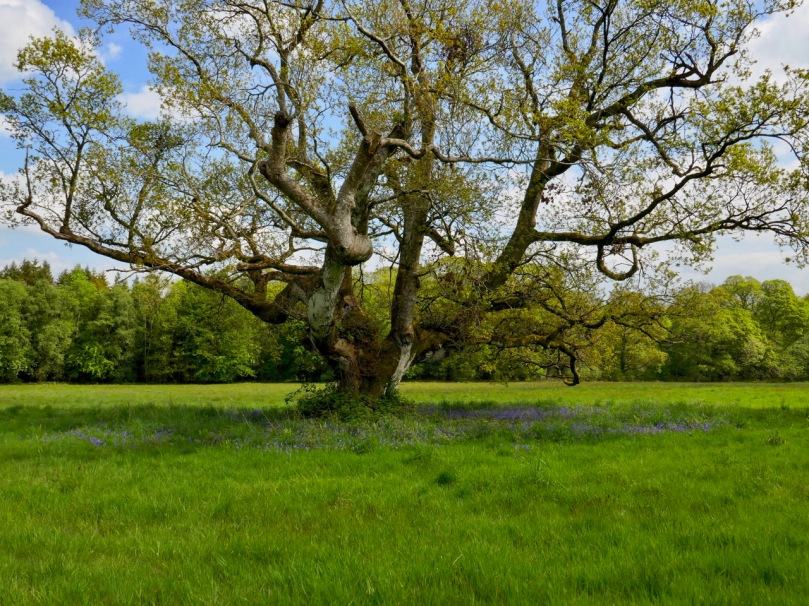

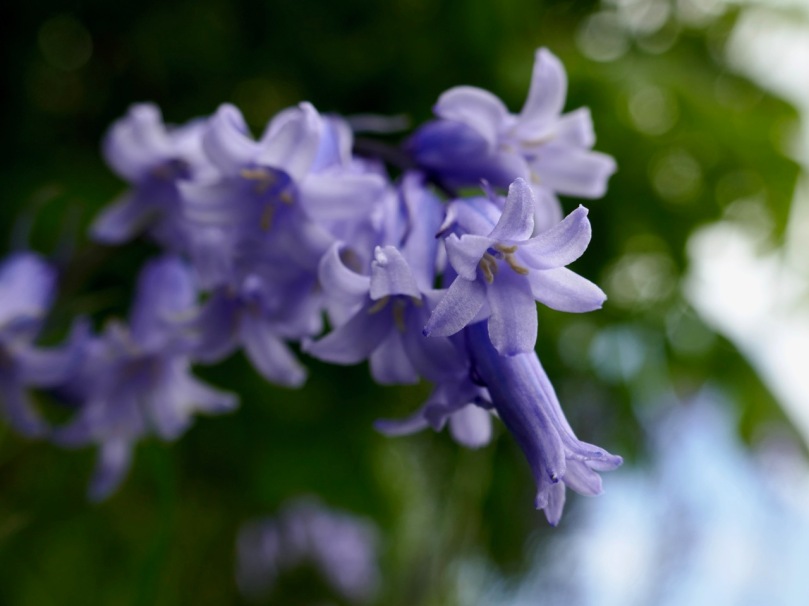







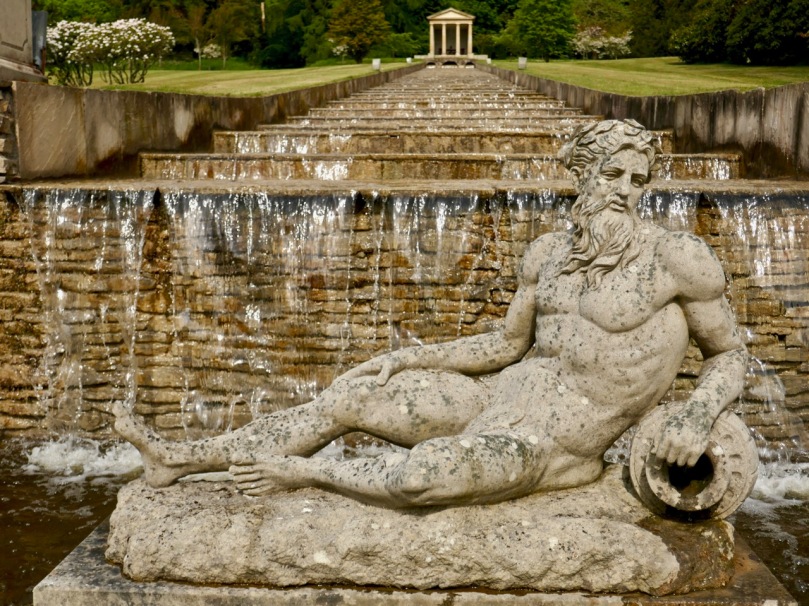
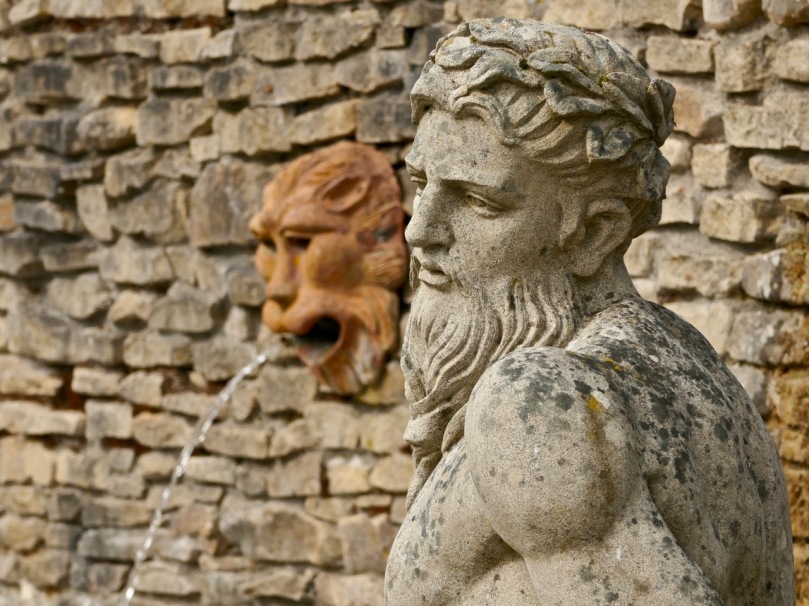
The Cuckoo Spit flowers in the bottom of the first Round Tower photo are a wonderful member of the brassica family and are delicious
LikeLike
Good to know!
LikeLike
Great photos – some nice shallow focus! Beautiful gardens.
LikeLike
Thanks – been working on my depth of field.
LikeLike
So Beautiful… what a treat!
LikeLiked by 1 person
Glorious!
LikeLiked by 1 person
Wow, what an amazing place – so much to explore and so well done. Every home definitely needs a grotto! Superb photos Finola. I especially love your bluebells,
LikeLike
Yes, it was v special. Two days of magic.
LikeLiked by 1 person